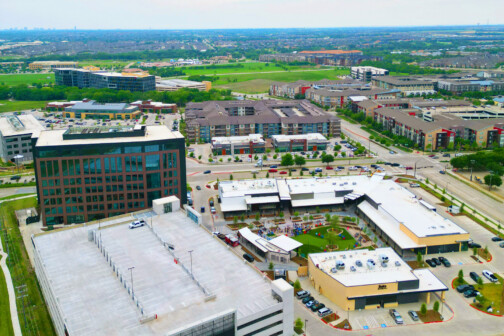COVID-19 has led to rapid changes in health care innovation: telemedicine, artificial intelligence, payment models, and a host of other digital analytics tools have morphed from experimental to borderline conventional.
At a panel during the 2020 North Texas State of Reform Virtual Health Policy Conference, health executives Tom Banning, chief executive officer of Texas Academy of Family Physicians, Dr. Andrew Masica, senior vice president of Texas Health Resources, and Dr. Steve Miff, president of Parkland Center for Clinical Innovation, met to discuss which of these developments will last beyond the pandemic.
Before COVID-19, telemedicine accounted for about one percent of health care visits, approximately 1.4 million visits. According to Tom Banning, seven months later, the nation has seen a three-fold increase in the use of telemedicine, accounting for about 35 million virtual visits.
“I don’t think there’s any question that telemedicine is here to stay,” Banning says. “It’s proven its effectiveness. Patients now expect to be able to connect with their doctors, and doctors see value in connecting with their patients.”
Despite the high reliance on telehealth during the pandemic, health executives like Banning acknowledge that there are still workflow and payment methodologies to develop for telemedicine to become a scalable and viable innovation long term.
Through partnerships and collaboration across healthcare organizations, leaders have rapidly applied predictive analytics to engage with the surrounding community. “It’s kind of ironic. Data and computers are helping deliver more personalized medicine,” Dr. Andrew Masica says. “If we do it the right way, that’s a possibility for health systems.”
The pandemic laid bare the need for high-speed data reports that allow primary care physicians to understand and digest patient information quickly. Through this innovation, healthcare providers and physicians can better leverage data, creating more personal interactions with patients.
“There has been a paradigm shift,” Masica says. “We know the market and patient expectations are going to be different. Our challenge is to adapt to what’s at hand. The underlying theme of where digital tools and innovation can help us is the push towards a more consumer and patient-centered health system with the ability to leverage data in real-time.”
The development of proximity data has been crucial to understanding the virus’s spread and defining vulnerability indexes. Initially, health officials attempted to track the virus by monitoring Americans’ international travel. With the virus’ rapid spread across the nation and relatively high case counts months later, these data tools have provided health experts with predictive tools to anticipate the virus and critical areas of concern.
“It gives us something very actionable to do,” Dr. Miff says. “Predictive modeling is pretty simple. Based on a patient’s address, we can geo-map every single positive case, and then use a sophisticated machine learning formula to calculate distances to those positive cases and the density.”
As the industry adapts to changes in innovation, health leaders are regularly evaluating the outcomes of these new measures to determine their effectiveness outside of controlled trials. Moving beyond the pandemic’s initial peak, further study will be necessary for defining these tools’ future use.“Proof of efficacy isn’t proof of effectiveness,” Masica says. “We need to be adopting and pushing digital innovations that are shown to be effective and rigorously assessing the outcomes of these technologies.”
At a panel during the 2020 North Texas State of Reform Virtual Health Policy Conference, health executives Tom Banning, chief executive officer of Texas Academy of Family Physicians, Dr. Andrew Masica, senior vice president of Texas Health Resources, and Dr. Steve Miff, president of Parkland Center for Clinical Innovation, met to discuss which of these developments will last beyond the pandemic.
Before COVID-19, telemedicine accounted for about one percent of health care visits, approximately 1.4 million visits. According to Tom Banning, seven months later, the nation has seen a three-fold increase in the use of telemedicine, accounting for about 35 million virtual visits.
“I don’t think there’s any question that telemedicine is here to stay,” Banning says. “It’s proven its effectiveness. Patients now expect to be able to connect with their doctors, and doctors see value in connecting with their patients.”
Despite the high reliance on telehealth during the pandemic, health executives like Banning acknowledge that there are still workflow and payment methodologies to develop for telemedicine to become a scalable and viable innovation long term.
“I don’t think there’s any question that telemedicine is here to stay.”
Through partnerships and collaboration across healthcare organizations, leaders have rapidly applied predictive analytics to engage with the surrounding community. “It’s kind of ironic. Data and computers are helping deliver more personalized medicine,” Dr. Andrew Masica says. “If we do it the right way, that’s a possibility for health systems.”
The pandemic laid bare the need for high-speed data reports that allow primary care physicians to understand and digest patient information quickly. Through this innovation, healthcare providers and physicians can better leverage data, creating more personal interactions with patients.
“There has been a paradigm shift,” Masica says. “We know the market and patient expectations are going to be different. Our challenge is to adapt to what’s at hand. The underlying theme of where digital tools and innovation can help us is the push towards a more consumer and patient-centered health system with the ability to leverage data in real-time.”
The development of proximity data has been crucial to understanding the virus’s spread and defining vulnerability indexes. Initially, health officials attempted to track the virus by monitoring Americans’ international travel. With the virus’ rapid spread across the nation and relatively high case counts months later, these data tools have provided health experts with predictive tools to anticipate the virus and critical areas of concern.
“It gives us something very actionable to do,” Dr. Miff says. “Predictive modeling is pretty simple. Based on a patient’s address, we can geo-map every single positive case, and then use a sophisticated machine learning formula to calculate distances to those positive cases and the density.”
As the industry adapts to changes in innovation, health leaders are regularly evaluating the outcomes of these new measures to determine their effectiveness outside of controlled trials. Moving beyond the pandemic’s initial peak, further study will be necessary for defining these tools’ future use.“Proof of efficacy isn’t proof of effectiveness,” Masica says. “We need to be adopting and pushing digital innovations that are shown to be effective and rigorously assessing the outcomes of these technologies.”





